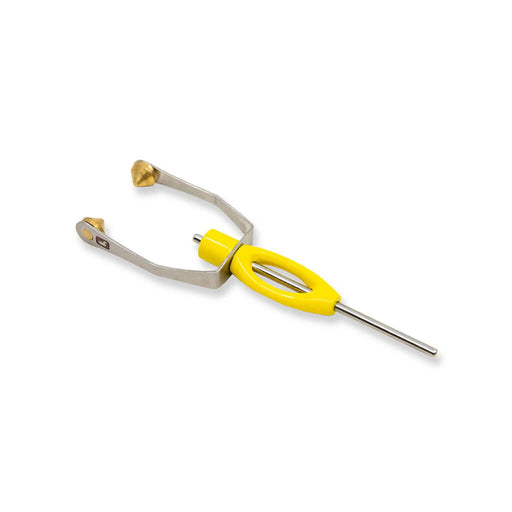
Fly Fishing Gear | Fly Tying | All
Tie it yourself!
Whatever you want to tie for whatever you want to chase, we offer the best in fly tying tools, materials and accessories to help you make the most effective, durable and fishy patterns that will hit the water.
Click here to read more...
WHAT EQUIPMENT IS NEEDED TO TIE FLIES?
The most important tool for fly tying is a fly-tying vice to hold the hook in place, a bobbin to hold the thread and keep tension while tying and a sharp pair of scissors for cutting thread, fur, tinsel and hair. These are the basics that you really need to get started.
You can also add a whip-finish tool to help tie off your finished fly, hackle-pliers to help hold onto small feathers, wire or thread, a dubbing-needle to pick apart fibers or split thread, a comb or brush to scruff up materials or smooth them down as required, a deer-hair-stacker for (you guessed it!) stacking deer hair, a dubbing-spinner for spinning different hair and fur together to create layers. Honestly, the list just keeps on going as new fly-tying methods are being developed, and we’re forever adding to our fly tying tool range.
WHAT MATERIALS DO YOU NEED TO TIE FLIES?
To start with, you need a good quality hook to tie onto and some tying-thread to tie with. From there, you can add beads or wire for weight to sink your fly, feathers or foam to float your fly, fur (dubbing) for bodies, tinsel for tails, hair for wings, or anything else you can think of.
Materials in fly tying are limited only by your imagination. You can tie, glue, or resin materials to your hooks as you see fit to come up with your desired profile or action. From the tiniest ant pattern for trout to the largest Murray-Cod fly that imitates a large rat swimming across the surface; if a fish eats it, you can tie a fly to imitate it.
We generally divide tying materials into two big groups: Naturals or Synthetics. The big difference being that one is made in a factory, the other you're more likely to find on the side of the road...
Generally, when you think of natural fibers, you think of feathers and fur. Fly-tying feathers come from chickens, ducks, turkeys, geese, and pretty much any other bird that can be farmed or hunted. A lot of time and energy is spent breeding and farming different species of birds to achieve just the right feather color and texture for flies. Fur (which is usually called dubbing) also comes from a variety of both farmed and hunted animals. The most common being deer, rabbit or hare, and possum. Furs are also ethically sourced from areas where animals have been introduced and are now considered a pest species, like the Possum in New Zealand, meaning that not only are they great for tying, but they also help reduce the environmental impact of pest species.
Synthetic Materials are a wide-ranging group and usually add a bit of flash and sparkle to flies that can’t be achieved with natural materials alone. Tinsel Flash is fantastic for mimicking the shine on a small bait-fish, resulting in the ‘Surf candy’. Chenille is excellent for creating long-moving body profiles for worms, like the ‘Croston worm’. Sometimes a synthetic material almost completely replaces a natural product in some styles of fly; ‘Hoppers’ used to be tied predominately out of buoyant deer hair but are now mainly tied out of more buoyant and durable foam.
Some of the best flies incorporate the ‘buggy’ look of natural materials along with the versatility of synthetics. The perfect example being probably the best fly to learn how to tie with.
Need Help Choosing Some Fly Tying Gear? Contact Us Today
If you have a something in mind but would appreciate some additional advice, simply get in touch with our friendly sales team – they’re always up for a chat. You can contact us by calling our Tumut store on (02) 6947 4062 or by email.
Loon Ergo Bobbin
Loon OutdoorsString it up and let er rip! The Loon Ergo Bobbin spins up flies like no other. The Loon Ergo Bobbin is the perfect tool for maximising your fly-ty...
View full details

